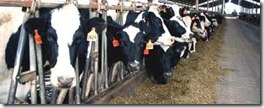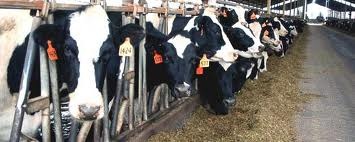 Volatility in cash cheese, butter and nonfat dry milk has been as unpredictable as the other commodity markets and weather over the past few weeks. Meanwhile, recent hot, humid weather has impacted U.S. milk production.
Volatility in cash cheese, butter and nonfat dry milk has been as unpredictable as the other commodity markets and weather over the past few weeks. Meanwhile, recent hot, humid weather has impacted U.S. milk production.
Volatility in cash cheese, butter and nonfat dry milk has been as unpredictable as the other commodity markets and weather over the past few weeks. One can clearly say there is no trend, unless perception and volatility is a trend.
One week we may see no outside influence on the dairy trade coming from the other markets, while the next seems to bring a strong correlation to what is taking place in the other markets influenced by both national and international events. Have we been global long enough and trading volume increased enough in the dairy complex to bring in more traders? Volatility usually brings more trading activity.
This past week has increased concern over the impact hot, humid weather was having on milk production. California went through a bout of hot weather earlier, which has since tempered. The Plains, Midwest and Northeast were the recipients of an event dubbed the “Dome of Gloom,” with the hottest weather experienced in years.
Concern erupted over the stage of the corn crop as many stated this was right during pollination. Stories of yield losses circulated. However, further analysis indicated much of the corn crop may have benefited from the heat. The nation’s corn crop, according to the weekly Crop Progress report, indicated the crop was about a week behind. Furthermore, the resulting heat units were beneficial to late planted crops. There is no doubt some of the corn crop was affected. It will be difficult to tell the impact until harvesting is done.
The more direct impact for the dairy industry was the significant decrease seen in milk production. Farmers tried their best to keep cows comfortable and alive. There have been numerous reports of cow deaths due to the intense heat and humidity. Milk receipts in many areas were down 10% or more along with reduced components. The heat spell was long enough in duration to make in difficult for cows to regain their production capability once the weather tempers.
Lower milk output seems to have caught the attention of cash buyers, especially in block cheese. Less than two weeks ago, the price was declining, reaching below $2.00. However, it was only for a brief period of time. Buyers were aggressive last week, pushing the block cheese price to the highest level in three years. This buying and reluctance of selling seems to stem from the idea that production will tighten at a time when buying interest and demand generally increases.
Current cheese prices, although welcomed by dairy producers, may be a little precarious. Although the June inventory of American cheese showed a decline of 2.8 million pounds from May and 8.0 million pounds below a year earlier, total cheese stocks increased 3.0 million pounds from May and 13.0 million pound above a year ago. This in itself does not seem like a big deal and is not necessarily bullish or bearish to the market. However, the comparison that makes the market a bit suspect is the comparison of price and stocks three years ago when cheese prices were this high.
American cheese inventory in June 2007 was 565.9 million pounds versus the recently released June inventory this year of 619.0 million pounds. Total cheese stocks in June 2007 were 891.2 million pound while June 2011 was 1.051 billion pounds. Looking at these numbers, it would suggest price should not be this high, but there is a fear that tighter supply with good demand will decrease stocks significantly.
Consumer demand will be the key. The purpose of high prices is to cure high prices. If demand slows and supply begins to build, prices will need to decline. If seasonal demand remains strong and buyers want fresh cheese, it will not make any difference what inventory is for the next few months.
My recommendation is to use put options for closer months to establish some nice floor prices. Initiate fence strategies for later months for maximum downside protection while still allowing for the ability to captures some upside to the sold call option strike price. A put option spread is another method if you do not want to be involved in potentially having to pay margin if prices increase. Put option spreads will limit downside protection, but it is better than doing nothing.
Upcoming reports:
– July Agricultural Prices report on July 29
– Dairy Products report on August 1
– California 4a/4b prices on August 1
– Fonterra auction on August 2
– July federal order class prices on August 5
– California Class I price on August 10
Robin Schmahl is a commodity broker and owner of AgDairy LLC, a full-service commodity brokerage firm located in Elkhart Lake, Wisconsin. He can be reached at 877-256-3253 or through their website at www.agdairy.com.
The thoughts expressed and the data from which they are drawn are believed to be reliable but cannot be guaranteed. Any opinions expressed are subject to change without notice. There is risk of loss in trading and my not be suitable for everyone. Those acting on this information are responsible for their own actions.
http://www.agweb.com/livestock/dairy/blog/AgDairy_Market_Update__236/

Deprecated: strpos(): Passing null to parameter #1 ($haystack) of type string is deprecated in /home/agriviek8Qv/agriviet.net/public_html/wp-includes/comment-template.php on line 2522